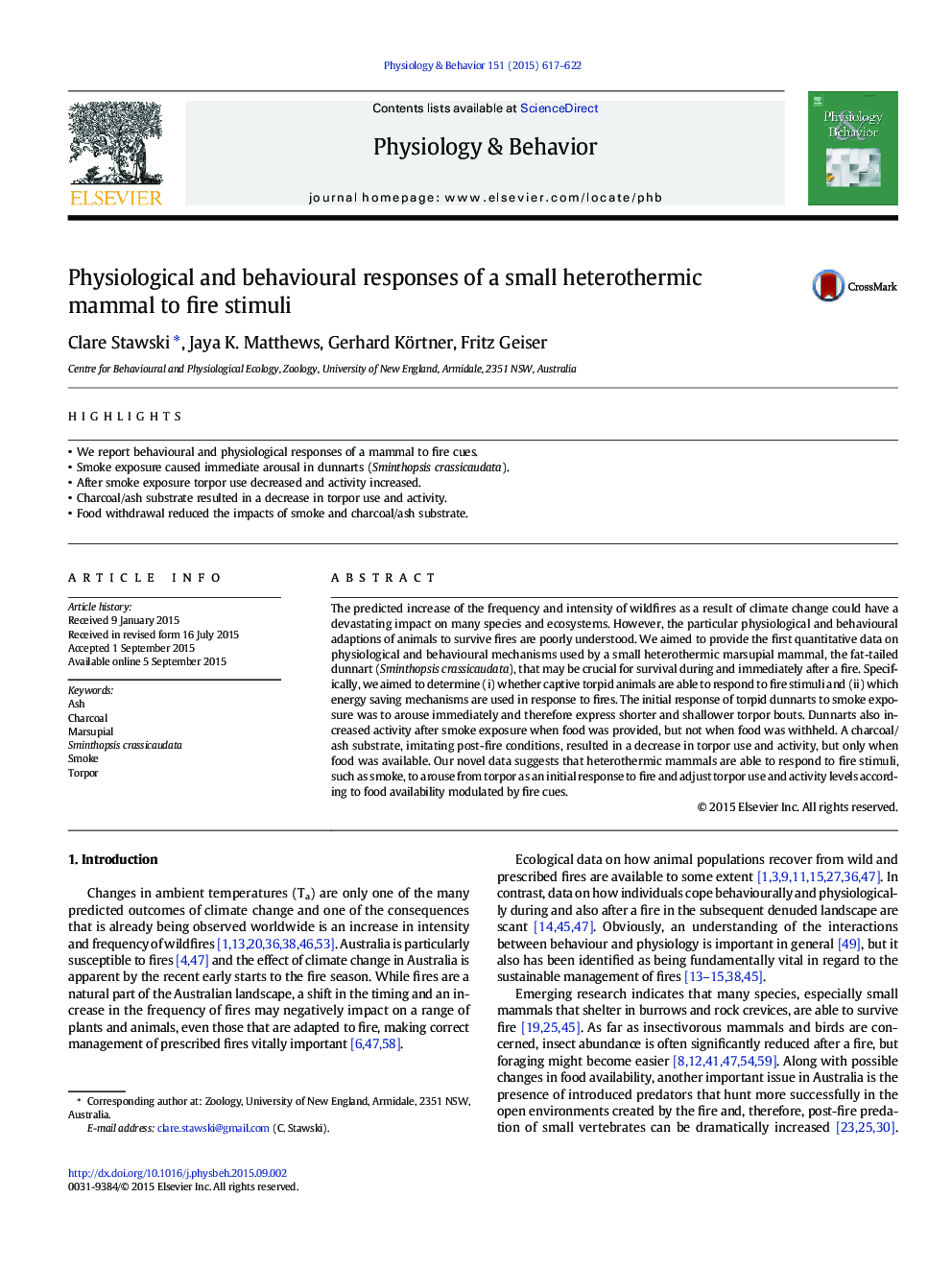| Article ID | Journal | Published Year | Pages | File Type |
|---|---|---|---|---|
| 5923384 | Physiology & Behavior | 2015 | 6 Pages |
â¢We report behavioural and physiological responses of a mammal to fire cues.â¢Smoke exposure caused immediate arousal in dunnarts (Sminthopsis crassicaudata).â¢After smoke exposure torpor use decreased and activity increased.â¢Charcoal/ash substrate resulted in a decrease in torpor use and activity.â¢Food withdrawal reduced the impacts of smoke and charcoal/ash substrate.
The predicted increase of the frequency and intensity of wildfires as a result of climate change could have a devastating impact on many species and ecosystems. However, the particular physiological and behavioural adaptions of animals to survive fires are poorly understood. We aimed to provide the first quantitative data on physiological and behavioural mechanisms used by a small heterothermic marsupial mammal, the fat-tailed dunnart (Sminthopsis crassicaudata), that may be crucial for survival during and immediately after a fire. Specifically, we aimed to determine (i) whether captive torpid animals are able to respond to fire stimuli and (ii) which energy saving mechanisms are used in response to fires. The initial response of torpid dunnarts to smoke exposure was to arouse immediately and therefore express shorter and shallower torpor bouts. Dunnarts also increased activity after smoke exposure when food was provided, but not when food was withheld. A charcoal/ash substrate, imitating post-fire conditions, resulted in a decrease in torpor use and activity, but only when food was available. Our novel data suggests that heterothermic mammals are able to respond to fire stimuli, such as smoke, to arouse from torpor as an initial response to fire and adjust torpor use and activity levels according to food availability modulated by fire cues.
